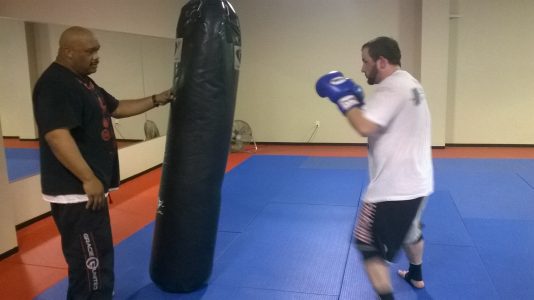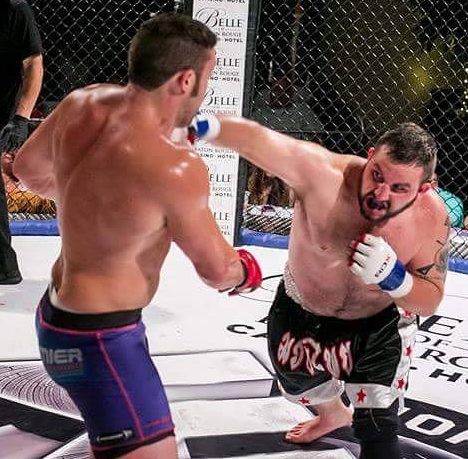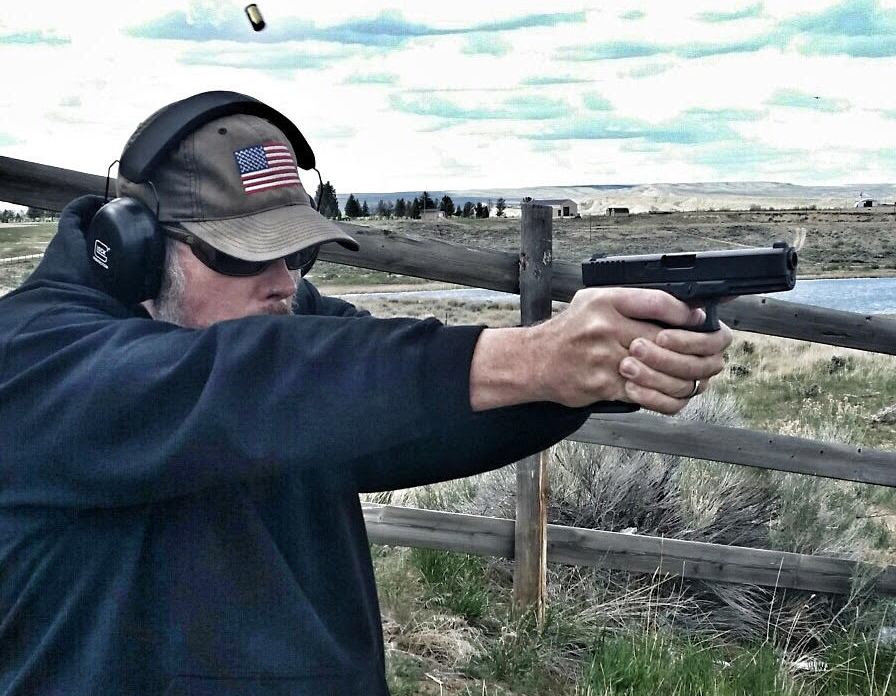Navigate This Post
“I don’t need to know Karate, I know Ching-Ching.” (mimics racking the slide on a pistol) so said the man standing at the counter in a small gun store many years ago. In my younger days, I spent a great deal of time at gun shops and at gun shows. Sadly, most everyone one who frequented gun stores, at least in my experience, viewed themselves to be a gunfighter.
I do indeed glean quite a bit of knowledge about firearms, cartridge choices, and handloading. However, the actual gunfighting or tactical advice offered was generally abysmal. Conversations about the M1911 and .45 acp cartridge were endless. The terms “knock-down power” and “stopping power” become throw abouts with reckless abandon.
The previously mentioned “Ching-Ching” comment, meaning, “I have a gun. I don’t need martial arts,” was a common thought process. Other assertions, such as “I might not know Karate, but I know 45.” or “You might know Kung fu, but I know John Browning.”, were frequent.
These folks might have been trying to be cute or funny. Fact was most believed that being a gun owner negated the need to engage in physical or martial art training. Ultimately, few if any actually carry guns.
NEW!! Did you know that we now have digital training courses?
Click Here to gain instant access to Force Options: How to Defend Yourself Without a Weapon >>
While I have been carrying professionally and personally for three decades now, I have never ceased practicing or training in the various traditional martial disciplines. Recently, while beating on the heavy bag with gloved hands, I realized I needed to write down the reasons why every aspiring gunfighter should at very least learn to box.
Reason 1: Fitness and Strength
*Smart-Ass Disclaimer: No, I am not saying that a person needs to be a Golden Glove-level boxer to be able to save their lives with a firearm. What I will assert in the following paragraphs is that the ability to operate a simple machine (that is what a firearm is) does not impart the ability to actually fight for your life.
The act of shooting a firearm, whether rifle or pistol is largely a mechanical function. The shooter must learn to properly hold the gun and steady it so that there is as little movement at the muzzle at the moment of cartridge ignition as humanly possible. Even if only for a fraction of a second, the muzzle must be held motionless on the target if the shooter expected to hit his mark.
Other than the act of holding on to the gun and pressing the trigger, marksmanship requires considerably little physical effort on the part of the shooter. The act of discharging a firearm provides very little in the way of physical fitness training, including strength and stamina.
At very least, a gunfighter needs to have upper body strength, particularly strong hands and arms. A dedicated boxing routine will most certainly aid you in the upper body strength area. Also, the act of throwing punches and blocking while moving around aids in the development of slow and fast twitches.
If you hope to hold your firearm steady and control it well during the high stress adrenaline dump of a lethal force encounter, you might consider the benefits of arm strength and muscle coordination.
Reason 2: Coordination and Balance
Gunfights are fast and furious events. If you are standing still when the fight begins, option one is to move quickly off of the “X”. Majority of gunfighters worry about planting their feet and never learn to move in a quick, rapid, and well-balanced manner.
Boxing teaches balance and coordination. Most often we just refer to this as good “footwork”. Boxers learn very quickly that “cement feet” lead to bruised faces. The vast majority of justifiable use of force shootings begin with the bad guy initiating the action and the good guy playing catch up.
Remember, the most important part of a gunfight is “No Getting Shot”. Moving rapidly from the place the bad guy expected you to be is a great way to not get shot. However, the movement must be a rapid unconscious action. As a gunfighter, if you have to tell yourself to start moving, you have probably already been hit.

Reason 3: Close Quarters Reality
Again, most common marksmanship training and gunfighter practice takes place at comfortable distances. Go to any shooting range or school and you will find people engaging targets at five, seven, ten yards or farther. While it is most valuable to be able hit a target at distance, the reality of your world is that gunfights start at very close distances, often at touching distance.
When you practice boxing you will invariably not only hit a heavy bag, but work with focus mitts held by a coach or trainer and then move on to controlled sparring.
One of the most terrifying aspects of a gunfight is the ferocious nature of an attacker violating your personal space. Good people respect the personal space of others, bad guys do not. Most good people will never have to deal with this close, in-your-face violation until they are fighting for their lives.
Whether or not you plan to compete as a boxer, sparring forces you to deal with another human being who is trying very hard to violate your personal space and harm you. Think of sparring as inoculation training for the violent confrontation.

Closing
Owning, and even carrying, a firearm does not provide you with some kind of magical cone of protection against the evil doers of the world. For the good guys of the world, the attack will normally begin with your gun in the holster.
While boxing is not gunfighting, the practice of it can help you improve. Improve as a gunfighter by way of greater physical strength and stamina, improved balance and coordination. And the first time someone really gets in your grill, it will be in the training arena, not on the street.
I can only hope that the “I know Ching-Ching.” or “My .45 will beat your Kung fu.” mentality can be left in the trashcan of unrealistic gun shop chatter. At the very least, a few training days a week will help your inside-the-waistband holster fit better in your pants.
JOIN FREE: Click Here for Complimentary Access
Professor Paul Markel
Latest posts by Professor Paul Markel (see all)
- Tactical Masturbation: Top 3 Stupid Human Tricks - July 8th, 2024
- Blood Trail: Fearless Fiction - June 21st, 2024
- SOTG and SB Tactical Celebrate Brace Ruling - June 20th, 2024
- Shotgun Accessories: Practical and Useful - June 14th, 2024
- Tactical Rifle Tips: Transition Drills - January 5th, 2024







Excellent discussion.
Thanks!
Great topic and reminder to get the sparring in, not just training and practicing. I’m guilty of training alone all too often… i foresee a real resolution….
Three very good reasons that boxing can help and improve your day to day life. As well as your ability to meet the challenges of a violent encounter. Boxing would be a very good choice for an on-line introductory digital training course.
I figured it out, what is your excuse? 🙂 -Paul
Everyone needs to learn how to fight, period. Guns can fail, you can miss (despite all the training in the world), the enemy can get a jump on you (which is usually the case on the street, most attacks are ambushes), etc etc. As former law enforcement, I can say that most police cannot handle themselves in a fight and resort to using their weapons when it’s unnecessary or at worst, unjustified. The training most officers get, both during and after the academy, is usually abysmal. I grew up boxing, never was a Golden Gloves champ or anything, but I still managed to tear through most people during DT (defensive tactics) who were bigger and stronger than me.
I’m a massive gun rights advocate and while I think every lawful citizen should be armed, it’s foolish to trust 100% on the firearm. Even a knife can be a better weapon in close distance in certain circumstances (don’t need to reload, can’t miss, easy to use and conceal). I chuckled when I read the examples of “ching ching” and “I know .45” because I can remember all the fat, slovenly hicks who probably never got into a fight in their lives act like physical training was some waste of time.